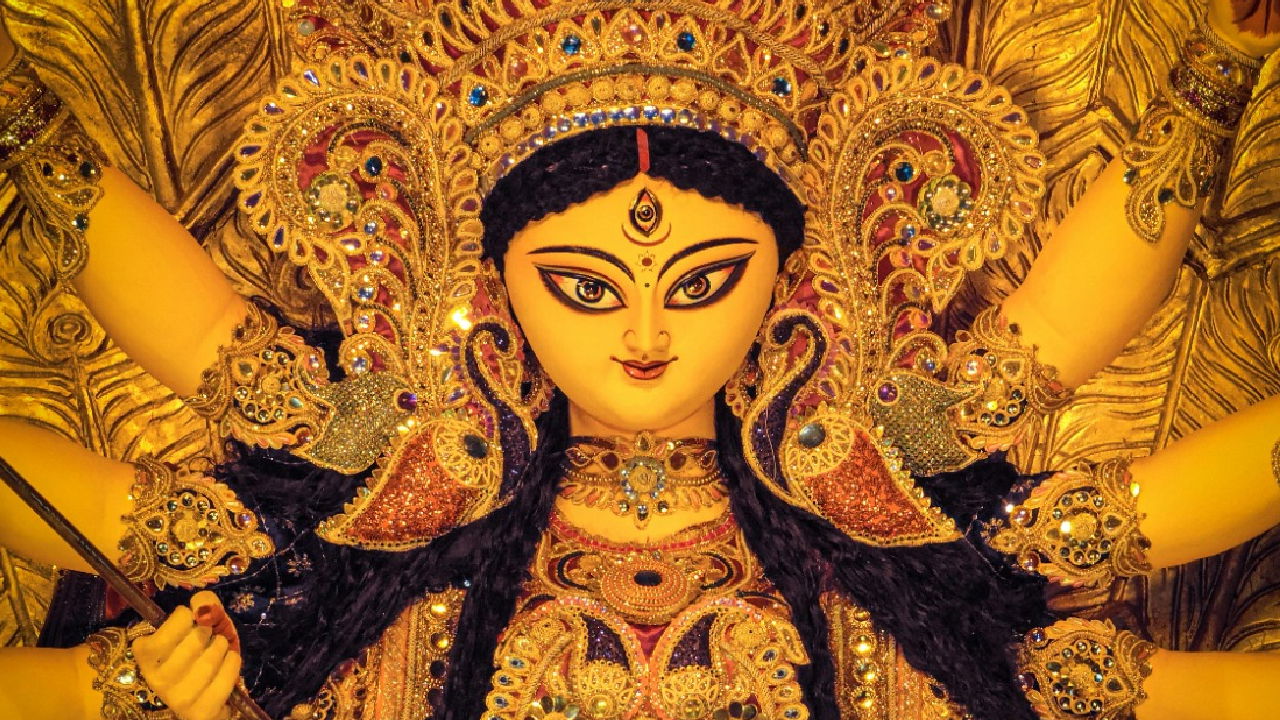
Navratri is dedicated to honoring the divine feminine. In the Gregorian calendar, the month of Ashvin, or Ashvina, or September through October, is when Navratri takes place over nine days. On the tenth day, there is usually a celebration of Dussehra, also known as Vijayadashami.
Since Navratri is based on the lunar calendar, it can also be observed for eight days, with Dussehra falling on the ninth. Navratri is the name of four related festivals celebrated at different times of the year. Still, the most important is the early autumn festival, Sharad Navratri.
Navratri is celebrated uniquely across India. Garba, a dance popular in Gujarat, is performed during this festive occasion. It is dedicated to the divine feminine represented by goddesses like Durga, Lakshmi, and Sarasvati. Rituals include Kanya Puja. Nine girls (kanyas) are dressed up as goddesses, receiving various offerings (kanya pujan).
Importance of Nine Days of Navratri:
Day- 1 Pratipada: The first manifestation of Goddess Durga, Shailaputri, is honored on this day. Yellow sets a cheerful tone for the celebration because it is a color associated with happiness, optimism, and new beginnings.
Day-2 Dwitya: This day is dedicated to Brahmacharini, symbolizing wisdom and devotion. Green embodies her energy, nature, and new beginnings, promoting balance and tranquility.
Day-3 Tritiya: Goddess Chandraghanta, a Durga form known for bravery, is represented by the color gray in Navratri, symbolizing courage, calmness, and invoking inner strength and protection.
Day-4 Chaturthi: The goddess Kushmanda in orange symbolizes energy, positivity, and creativity during Navratri, inspiring believers to embrace life's challenges.
Day- 5 Panchami: Goddess Skandamata is honored on White Panchami, symbolizing purity, peace, and protection. Wearing white on this day represents serenity and purity, reflecting the goddess's divine essence.
Day-6 Shashti: Red on Shashti represents Goddess Katyayani's fierce courage and strength, embodying love and power to inspire devotees during Navratri.
Day-7 Saptami: Royal Blue Saptami honors fierce Goddess Kalaratri with strength and peace, symbolizing authority, fortitude, and tranquility for Navratri followers.
Day-8 Ashtami: Goddess Mahagauri, the embodiment of purity, compassion, and tranquility, is honored on Pink Ashtami. Pink represents love, compassion, and nurturing. Wearing pink symbolizes divine feminine aspects and universal harmony.
Day-9 Navmi: Goddess Siddhidatri in Purple on Navami day is a powerful symbol of spiritual wisdom and blessings that aid in achieving enlightenment during the climax of Navratri.
Everything Devi touches is blessed with color and vitality. Every evening of Navratri is filled with magnificent cultural events, from folk performances to classical music and dance, when she is at her most radiant. People and musicians and dancers from all over the nation join together to offer Devi their artistic creations, bringing vibrancy and happiness to the celebrations.
















